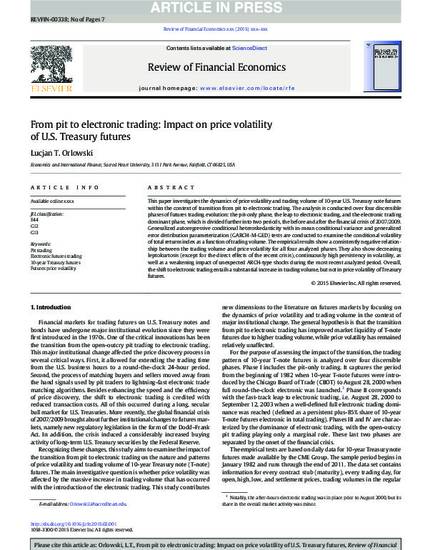
This paper investigates the dynamics of price volatility and trading volume of 10-year U.S. Treasury note futures within the context of transition from pit to electronic trading. The analysis is conducted over four discernible phases of futures trading evolution: the pit-only phase, the leap to electronic trading, and the electronic trading dominant phase, which is divided further into two periods, the before and after the financial crisis of 2007/2009. Generalized autoregressive conditional heteroskedasticity with in-mean conditional variance and generalized error distribution parameterization (GARCH-M-GED) tests are conducted to examine the conditional volatility of total returns index as a function of trading volume. The empirical results show a consistently negative relationship between the trading volume and price volatility for all four analyzed phases. They also show decreasing leptokurtosis (except for the direct effects of the recent crisis), continuously high persistency in volatility, as well as a weakening impact of unexpected ARCH-type shocks during the most recent analyzed period. Overall, the shift to electronic trading entails a substantial increase in trading volume, but not in price volatility of Treasury futures.

Version posted is the In Press, Corrected Proof, available online 18 February 2015.